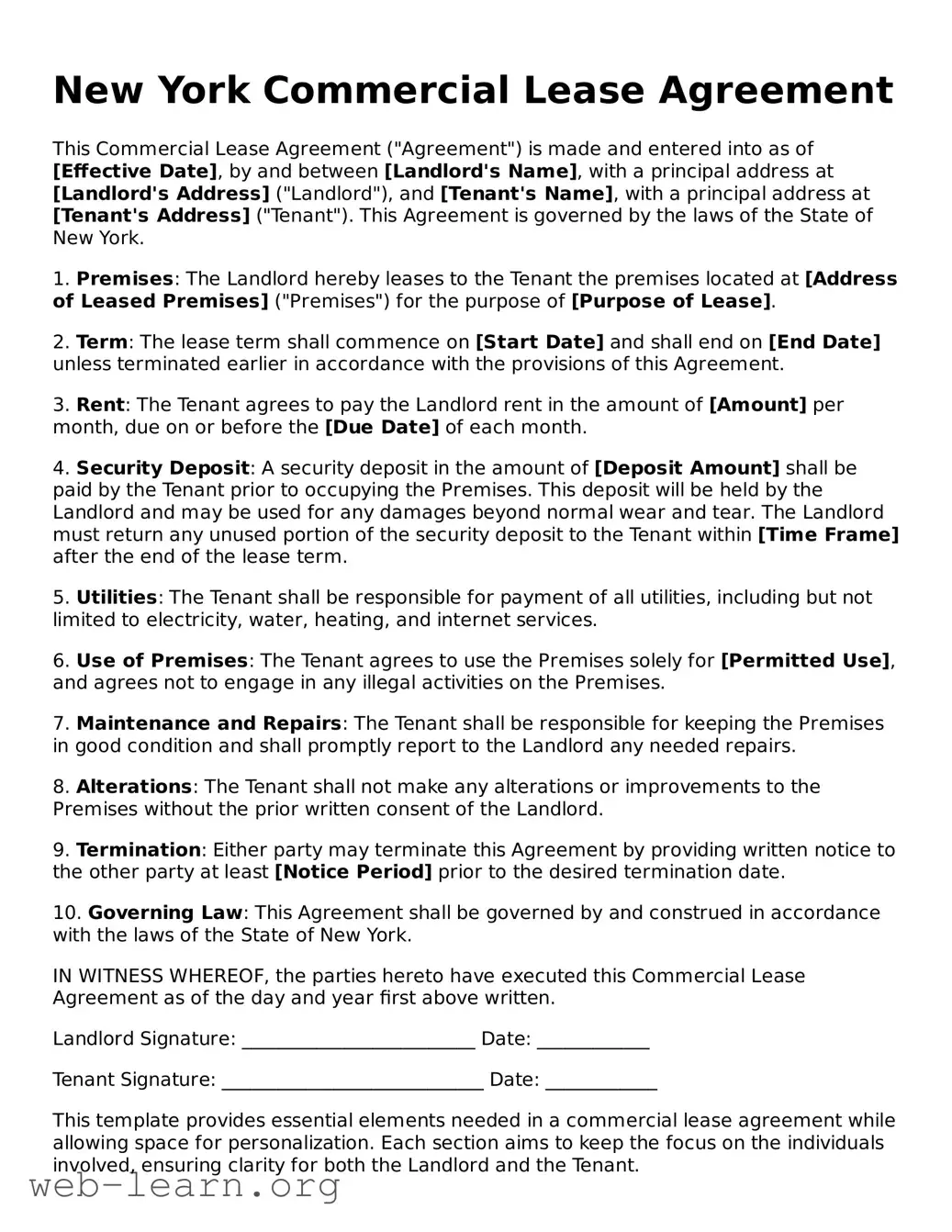New York Commercial Lease Agreement
This Commercial Lease Agreement ("Agreement") is made and entered into as of [Effective Date], by and between [Landlord's Name], with a principal address at [Landlord's Address] ("Landlord"), and [Tenant's Name], with a principal address at [Tenant's Address] ("Tenant"). This Agreement is governed by the laws of the State of New York.
1. Premises: The Landlord hereby leases to the Tenant the premises located at [Address of Leased Premises] ("Premises") for the purpose of [Purpose of Lease].
2. Term: The lease term shall commence on [Start Date] and shall end on [End Date] unless terminated earlier in accordance with the provisions of this Agreement.
3. Rent: The Tenant agrees to pay the Landlord rent in the amount of [Amount] per month, due on or before the [Due Date] of each month.
4. Security Deposit: A security deposit in the amount of [Deposit Amount] shall be paid by the Tenant prior to occupying the Premises. This deposit will be held by the Landlord and may be used for any damages beyond normal wear and tear. The Landlord must return any unused portion of the security deposit to the Tenant within [Time Frame] after the end of the lease term.
5. Utilities: The Tenant shall be responsible for payment of all utilities, including but not limited to electricity, water, heating, and internet services.
6. Use of Premises: The Tenant agrees to use the Premises solely for [Permitted Use], and agrees not to engage in any illegal activities on the Premises.
7. Maintenance and Repairs: The Tenant shall be responsible for keeping the Premises in good condition and shall promptly report to the Landlord any needed repairs.
8. Alterations: The Tenant shall not make any alterations or improvements to the Premises without the prior written consent of the Landlord.
9. Termination: Either party may terminate this Agreement by providing written notice to the other party at least [Notice Period] prior to the desired termination date.
10. Governing Law: This Agreement shall be governed by and construed in accordance with the laws of the State of New York.
IN WITNESS WHEREOF, the parties hereto have executed this Commercial Lease Agreement as of the day and year first above written.
Landlord Signature: _________________________ Date: ____________
Tenant Signature: ____________________________ Date: ____________
This template provides essential elements needed in a commercial lease agreement while allowing space for personalization. Each section aims to keep the focus on the individuals involved, ensuring clarity for both the Landlord and the Tenant.
